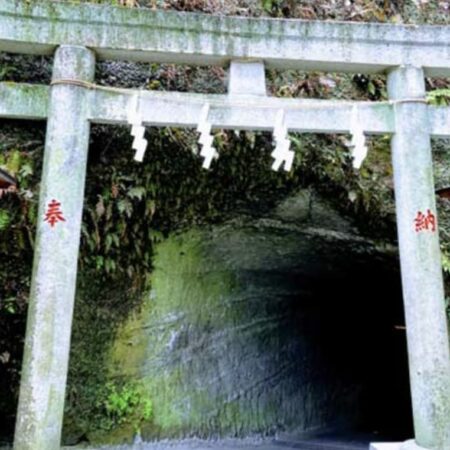Yamanashi Prefecture

Information
Home to Mt. Fuji, Yamanashi Prefecture is easily reachable from Tokyo but feels like a world away from the bustle of the capital. Besides Japan’s most sacred mountain, the nature-rich area hosts the picturesque Fuji Five Lakes, the sheltered highland resort of Kiyosato, solemn historical sites such as the Erinji and Kuonji temples, a remarkable variety of hot springs, and some of the country’s best wineries. In short, Yamanashi has everything for travelers seeking to discover a new side of Japan, uncover the true beauty of the country, and recover their sense of wellbeing in the midst of nature.
Access
The location of Yamanashi right next to Tokyo makes it conveniently accessible from the capital and its major airports. Frequent trains and highway buses run between Yamanashi and central Tokyo as well as Narita and Haneda airports.
5 MUST-SEE spots
Lake Motosuko

The view from what is now a parking lot at Lake Motosuko, of sacred Mount Fuji foregrounded by the placid surface of the lake, is among Japan’s most iconic sights. Since 2004, it has appeared on the 1,000 yen bill, with the image used based upon a photograph shot in 1935. Pull a bill from your purse or wallet, and you will see that this cherished view has remained virtually unspoiled in the intervening years. Dependent upon timing and weather conditions, you may see Mt. Fuji reflected upon the lake’s surface just as the prewar photographer’s lens captured it; the Japanese call this spectacle sakasa-Fuji (“upside-down Fuji”).
Lake Motosuko, 121 meters deep beneath its lapis lazuli-hued surface, is the westernmost and deepest of the famous Fuji Five Lakes, and the ninth deepest lake in Japan. Part of Fuji-Hakone-Izu National Park, Motosuko is popular for a range of activities including windsurfing, canoeing, and yachting. Its waters are among the clearest on Japan’s main island Honshu and are especially appreciated by divers and fishermen.
Venue address
Fujikawaguchiko-machi, Minamitsuru-gun and Minobu-cho, Minamikoma-gun
Suntory Hakushu Distillery

Suntory’s Second Malt Whiskey Distillery, also called “The Forest Distillery.” Located at the foot of Minami Alps, relying on the blessings of abundant nature, the Suntory Hakushu Distillery continues to produce Whiskey special to Hakushu through the skill of expert craftsmen.
Venue address
408-0316 2913-1 Torihara, Hakushu-cho, Hokuto City
Shingen-ko Festival

In April, when the cherry blossoms of Shingen-ko’s mansion Tsutsujigasaki (now Takeda Shrine) are fluttering, the flag of “Furinkazan” flutters in the Kofu basin, and the time slips at once during the Warring States period.
Shingen-ko’s death anniversary Various Shingen-ko festivals are held in various parts of Yamanashi prefecture around April 12th to remember the virtues.
The “Shingen-ko Festival”, which is held in the center of Kofu City, is held every year from Friday to Sunday before the anniversary of death (April 12), and from Saturday evening, more than 1,000 troops from all over the prefecture. Will gather at Maizurujo Park and recreate the appearance of going to Kawanakajima.
The scale is one of the largest in the world!
Under the Moesaka bonfire, the ritual of the departure, which is performed with the brave and brave Twenty-Fourth General Takeda, is brilliant. Among them, a brave war-torn country picture scroll can be unfolded.
Fugaku Wind Cave

All throughout Aokigahara Forest are underground caves formed by lava from the massive eruption of Mount Fuji in 864 CE. Among them, the most common cave type is the lava tube: as lava cools from the outside in, the outer layers of the lava harden and form a roof and tunnel for the remaining lava to flow through. The resulting cavern is long and elongated, like a tube.
The Fugaku Wind Cave is one such lava tube. It has an average internal temperature of 3°C, is 201 meters long and 8.7 meters high, and does not produce an audible echo. This is due to its porous basalt walls which help absorb sound.
The cave was formed around 1,100 years ago and was designated a Natural Monument in 1929 by the Ministry of Education. The surrounding forest was a giant lake prior to Mt. Fuji’s eruption, and a dragon god was said to reside in it. This deity is still worshiped in the area, with its primary shrine located in the Ryugu Cave at nearby Lake Saiko.
Descending into the Fugaku Wind Cave, the visitor will encounter illuminated ice and impressive stalactites and ice pillars all along its length. During the Edo period (1603-1868), the cave was used as a natural refrigerator, and the ice cubes produced here were offered to local lords as tribute.
At the back of the cave are rock walls covered with schistostega pennata, a type of luminescent moss known as goblin gold or Dragon’s gold. It grows in damp, low-light conditions and has a greenish-gold glow.
Venue address
401-0332 2068-1 Saiko Aokigahara, Fujikawaguchiko-machi, Minamitsuru-gun
Hombo Shuzo Co., Ltd. Yamanashi Mars Winery

Yamanashi Mars Winery seeks to produce world-class wines while always respecting the soil and climate of Yamanashi. We devote ourselves to fermenting grapes from our land into wines starting with the signature Chateau Mars line under the theme “harmony between mellow flavor and fine bouquet.”Our wines that take full advantage of Japan’s rich four seasons have won the gold prize at the Japan Wine Competition as well as acclaim abroad.We welcome visitors to tour the factory and see the winemaking process from grape pressing to bottle filling–and to enjoy our prided wines at the free tasting corner.
Venue address
406-0022 126 Isawacho-Yamasaki, Fuefuki-shi, Yamanashi






